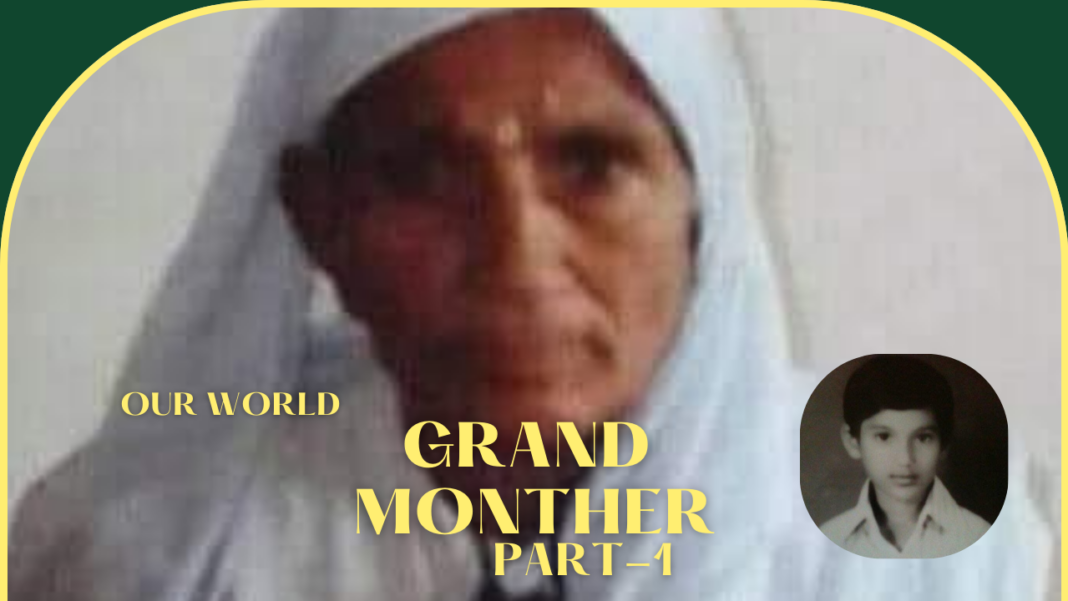Today, I dreamt of the “Big House” and its head lady. The whole day I felt restless, haunted by memories of the past, reminded of and brought to tears by them. That’s why I’m jotting down a few incomplete words. The rest will be written in another part.
2. The House and the Head Lady
The house in Okharbote, Madi, Sankhuwasabha was known to everyone as the “Big House.” The head of that house was my grandmother, whom everyone respected and called the “Big Lady.”
3. Grandmother’s Struggles and Sacrifices
At the age of 23, she became a widow and took sole responsibility for raising five children and managing the house. When my grandfather passed away, my father was six months in the womb, making my father “an unborn orphan.” It’s difficult to encapsulate her struggle and dedication in words, but here are a few fragments from my memories.
4. Daily Life and Community Relations
Our house had plenty of farmland. My grandmother was kind and sociable, and everyone in the community respected her. Despite the strict orthodox rules she had to follow as a widow and the numerous humiliations she endured, she managed to rise above them.
5. Farming and Sustenance
Our land was sunny, fertile, and rich. In the mountainous land, locals made money by raising apples, sheep, goats, and yaks, giving us half of their earnings. In the middle, our house and garden produced oranges, pears, lemons, pomelos, green vegetables, mustard, rice, and maize. Our land, which stretched from the hill to the river, also had sugarcane farming, managed by the tenants. We produced enough crops to last the year, and the surplus was sold. People from outside districts came to buy grains from our village.
6. The Joy of Harvesting
Ah, the joy of harvesting crops with oxen, using water from the canal, and threshing rice with oxen was an amazing experience. The day we went to the fields with workers and helpers to measure the rice with traditional wooden measuring cups was incredibly fun.
7. Challenges and Daily Routine
My grandmother struggled with educating her children, finding workers, and managing the farm. As a widow with five children, she had to juggle housework and farming. This was the daily routine of the Big Lady.
8. A Helping Hand
When the eldest daughter (my aunt) turned 12 and could help with the younger siblings and housework, my grandmother could finally catch her breath.
9. Family Support and Growth
Over time, the children grew up and got married. I am the son of the unborn orphan. My mother helped my grandmother with all the housework. At that time, it was customary for neighbors to help each other in the fields, but my grandmother never sent my mother; instead, she sent workers with grain. My mother never lacked help in cutting firewood, carrying fodder, plastering the house, using the grinding stone, and fetching water from the well in the morning. But my mother would always prepare snacks, meals, and pure food for my grandmother and the workers. Eventually, my mother was able to manage the Big House.
10. Photo Description
From left to right: me, my grandmother, Syama didi, and nephew Samir in my lap. The pants I’m wearing are Lee (my first pair of jeans, bought in Kathmandu).
11. Moving and Memories
When I was little, my father’s job moved us from one district to another like a herd, and I returned to Biratnagar to study in the ninth grade. Meanwhile, the trips to and from Madi continued. We had permanently left our ancestral soil but kept our souls there. I always remember the land my grandfather had toiled and cherished. Around 1980, I had the opportunity to visit Madi again. By then, the villagers had harnessed water from the mountain streams and lit up the village with electricity.
12. A Return to Ancestral Land
Nepal Bank had opened a branch at the edge of our garden, and a veterinary clinic, a health post, and a police post had been established nearby. Madi High School had also become a college. The vast courtyard of the Big House, the garden at the corner, the guest house for visitors, the traditional wooden tools for threshing grain, the cozy spot to warm ourselves in winter, the large kitchen, the sacred stove in the corner for my grandmother to cook pure food, the door to the waste disposal area, three bedrooms upstairs, the granary, and the large mustard greens, oranges, pomelos, lemons, walnuts, gooseberries, nettles, and other crops in the garden—all these memories are unforgettable.
13. Conclusion
Eventually, our education and jobs pulled us to Kathmandu. During that time, I had the opportunity to explore many corners of Nepal, many districts and villages from east to west. For the past 17 years, I’ve been in America, but I’ve never found a land as fertile as Madi.
Freelance Writer



